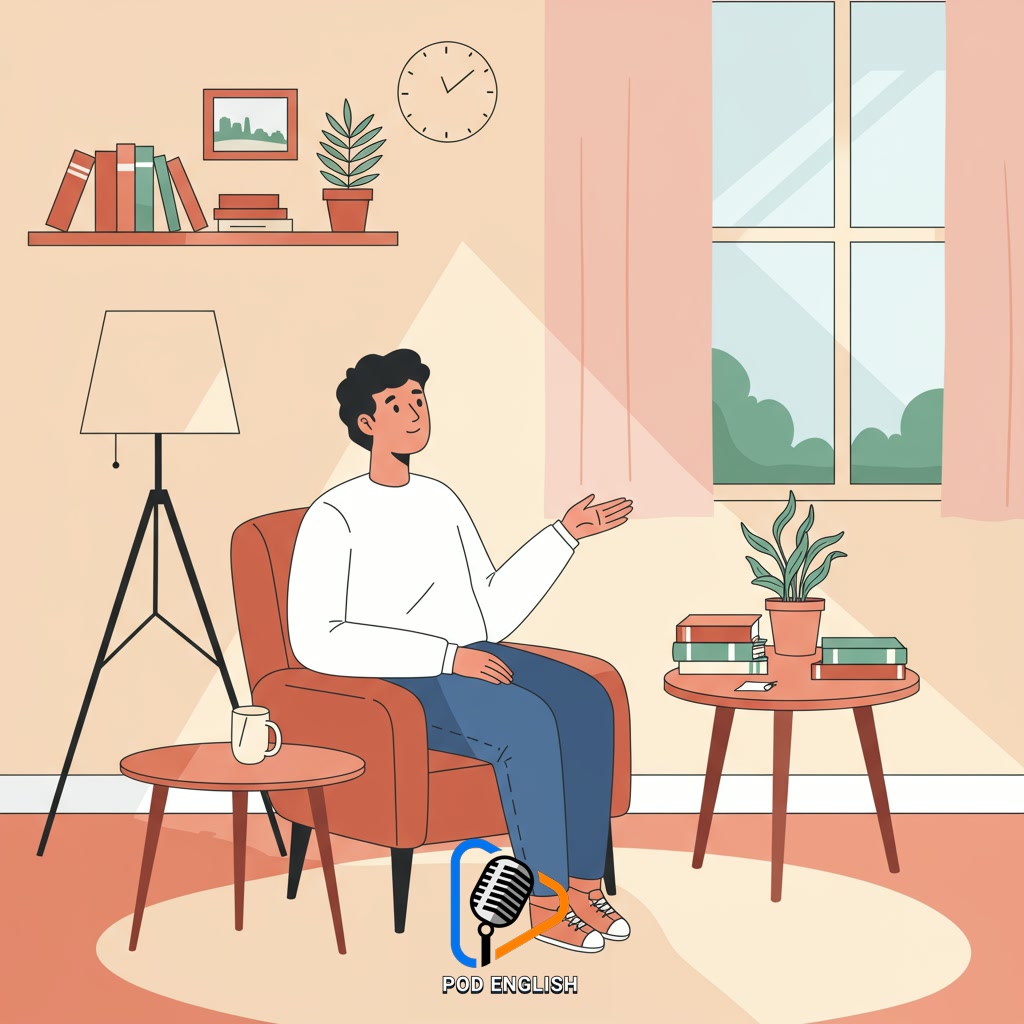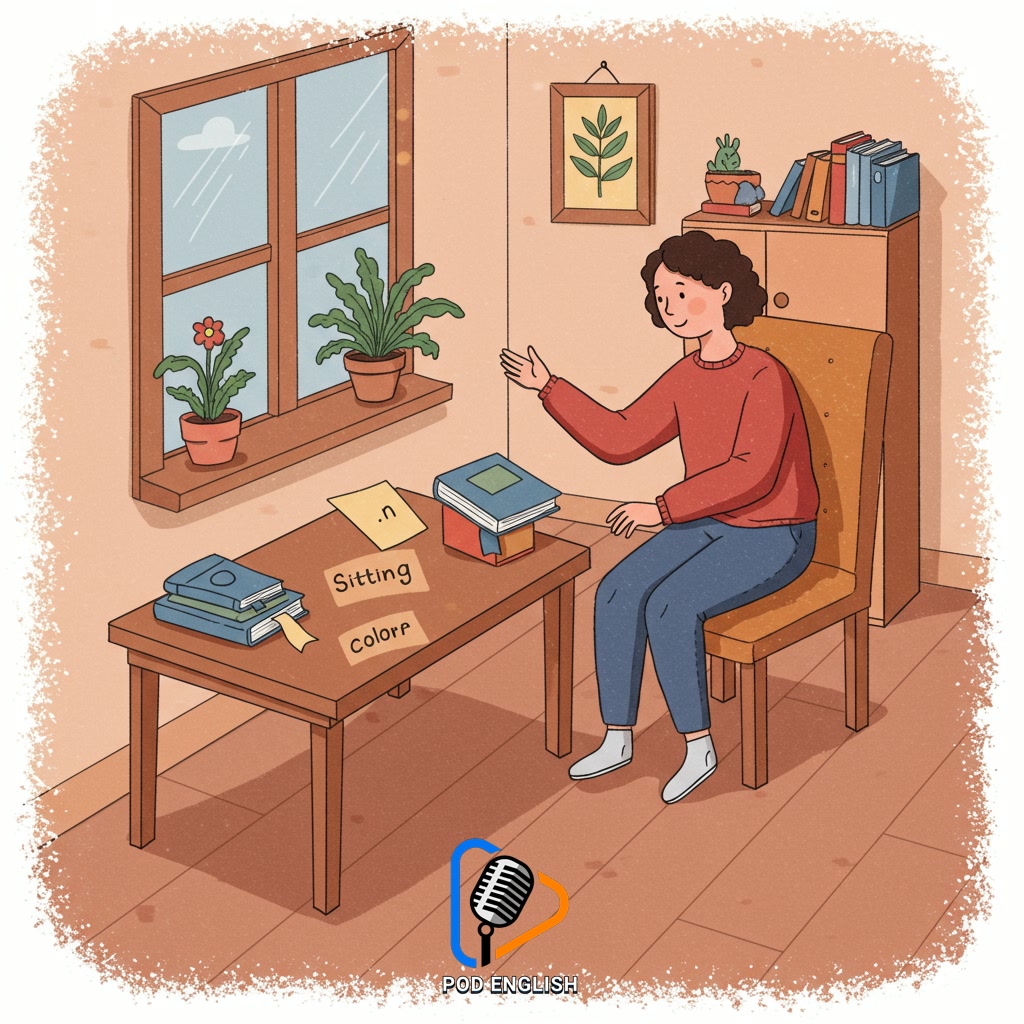Learn English
Learn English Vocabulary: Build Words from Your Everyday Surroundings

This content presents a practical strategy for acquiring English vocabulary. It focuses on leveraging your immediate environment to discover and internalize new words. By actively identifying objects and actions around you, you can significantly expand your English word bank. This approach makes vocabulary acquisition relatable and consistently accessible, supporting your overall goal to learn English.
Table of Contents
- Section 1: Introduction: Why Your Everyday Surroundings Are a Goldmine for Vocabulary
- Section 2: Getting Started: Identifying and Naming Objects Around You
- Section 3: Practical Techniques: Describing, Using, and Expanding on Basic Words
- Section 4: Beyond Nouns: Learning Verbs, Adjectives, and Prepositions in Context
- Section 5: Making it a Habit: Integrating Vocabulary Learning into Your Daily Routine
- Section 6: Tracking Progress and Staying Motivated
- Section 7: Conclusion: Harnessing Your Environment for Continuous Vocabulary Growth
Section 1: Introduction: Why Your Everyday Surroundings Are a Goldmine for Vocabulary
Learning new English words can often feel like a daunting task, with endless lists to memorize. However, the most effective and accessible resource for expanding your vocabulary might be much closer than you think. Your everyday surroundings—your home, your street, your workplace, or even your favourite cafe—are filled with countless objects, actions, and situations that have English names. By consciously observing and identifying the things you interact with daily, you can connect new words directly to real-world items and experiences. This method transforms passive learning into an active discovery process, making vocabulary acquisition more engaging, memorable, and consistently available. It turns your immediate environment into a rich and practical source for building your English word bank, revealing it as a true ‘goldmine’ for language learners.

Introduction: Why Your Everyday Surroundings Are a Goldmine for Vocabulary
Section 2: Getting Started: Identifying and Naming Objects Around You
Okay, let’s start by putting this simple strategy into practice. Look around you right now, wherever you are. Your immediate environment is your first classroom. Identify a simple object nearby – a chair, a table, a lamp, or perhaps a book. The first step is simply to notice it and think about its name in English. If you already know the word, great! Say it out loud or think it clearly. If you don’t, this is your opportunity to learn. Make a note of the object and look up its English name later. Repeat this process with other objects you see. This active engagement with your surroundings makes learning concrete and memorable, turning your everyday space into a dynamic vocabulary builder.

Getting Started: Identifying and Naming Objects Around You
Section 3: Practical Techniques: Describing, Using, and Expanding on Basic Words
Once you’ve identified a simple object around you, like a chair or a book, the next crucial step is to actively engage with it using English. Don’t just name it; try to describe its features. What colour is it? What shape? What is it made of? Is it big or small? Then, think about how you use it. What actions do you perform with or on this object? For example, you sit *on* a chair, or you read *a* book. This process helps connect the word to its real-world properties and functions. Finally, try to expand your vocabulary by thinking of related words or concepts. What are the parts of the object? What other types of similar objects exist? This technique transforms passive observation into active vocabulary building, making words more memorable and useful.

Practical Techniques: Describing, Using, and Expanding on Basic Words
Section 4: Beyond Nouns: Learning Verbs, Adjectives, and Prepositions in Context
Moving beyond simply naming the objects around you, the next step in building your English vocabulary is to learn the words that describe actions, qualities, and relationships. When you look at that chair, don’t just think “chair.” Consider what you do with it: you *sit* on it (verb). Describe it: Is it *old*, *new*, *comfortable*, or *wooden*? (adjectives). Where is the book in relation to the chair? Is it *on* the chair, *under* the chair, or *next to* the chair? (prepositions). By actively observing and describing the verbs, adjectives, and prepositions connected to the nouns you already know, you create a richer understanding and make these new word types more memorable. This contextual learning, using your immediate environment, makes vocabulary acquisition a dynamic and ongoing process for learning English.

Beyond Nouns: Learning Verbs, Adjectives, and Prepositions in Context
Section 5: Making it a Habit: Integrating Vocabulary Learning into Your Daily Routine
To truly build your English vocabulary using your surroundings, consistency is key. The goal is to transform this active observation into a daily habit, much like brushing your teeth or checking your email. Find small pockets of time throughout your day – during your commute, while cooking, waiting in line, or even just relaxing at home. Consciously look at the objects, actions, and qualities around you and try to name them in English. If you don’t know the word, make a note of it to look up later. This constant engagement, even for a few minutes at a time, reinforces learning and helps new words stick. By making vocabulary acquisition a natural part of your routine, you ensure continuous progress and build a richer connection between the English language and your everyday life.

Making it a Habit: Integrating Vocabulary Learning into Your Daily Routine
Section 6: Tracking Progress and Staying Motivated
Keeping track of your progress is crucial for staying motivated when building your vocabulary from your surroundings. Consider using a small notebook or a digital note-taking app on your phone. Each time you identify a new word for an object or action around you, jot it down. You can also add a simple definition or a sentence using the word in its context. Periodically review your list to see how many new words you’ve collected. Celebrating small milestones, like learning 10 new words in a week or successfully using a new word in a conversation, can provide a significant boost. Setting achievable goals, such as learning one new word from your environment each day, helps maintain consistency and reinforces the habit, making your vocabulary growth tangible and encouraging.
Tracking Progress and Staying Motivated
Section 7: Conclusion: Harnessing Your Environment for Continuous Vocabulary Growth
In conclusion, the strategy of building English vocabulary directly from your everyday surroundings offers a practical and sustainable path to continuous growth. This method transforms ordinary observations into valuable learning opportunities, integrating vocabulary acquisition seamlessly into your daily routine. By actively engaging with the objects, actions, and situations around you, you create strong, memorable connections for new words. Making this a consistent habit ensures that your vocabulary expands naturally and effectively over time. Embrace your environment as a dynamic resource, and you will find yourself constantly discovering and mastering new English words, making your learning journey both accessible and rewarding.

Conclusion: Harnessing Your Environment for Continuous Vocabulary Growth













